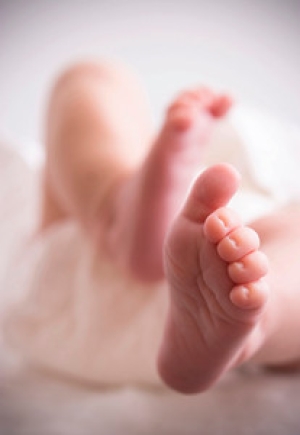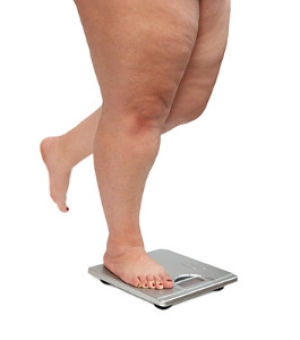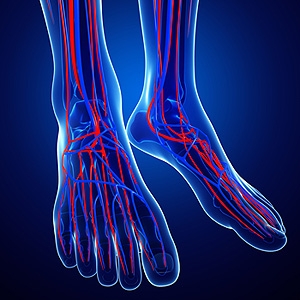
Foot and Ankle Trauma
The foot and ankle area works with 26 bones, 33 joints, and more than 100 different muscles, tendons, and ligaments. Problems with any parts of this network can result in some kind trauma within the foot and ankle area. Most foot and ankle trauma is a result of aging or intense activities such as sports. However, trauma in this area can also be the result of simple things such as wearing heels too much or even walking on an uneven pavement. There are several kinds of symptoms related to specific injuries, and there are also several different treatments that could be used as well.
Foot Injuries and Symptoms
Some common injuries in the feet include stress fractures and bunions. Stress fractures are small cracks in a bone or severely bruised parts of the bone. This type of injury is caused by intense and repetitive activity, which is found in actions involved with sports and exercise. Symptoms of this injury include pain, swelling, tenderness, and possible bruising. Another common injury with bones is also bunions, which are bony bumps typically formed on the big and little toes. This injury is typically a result from wearing high heels and unfit shoes. Some common symptoms are swelling around the big and little toe areas, as well as pain and restricted movement.
Ankle Injuries and Symptoms
The common injuries associated with ankle trauma consist of sprains, strains, and fractures. These injuries are defined by the type of tissue that has been damaged. Fractures are breaks within the bones caused by sudden impacts to the area. Sprains relate to any damage of the ligaments, commonly caused by being stretched beyond their normal range of motion. Strains are attributed to damage of the muscles and tendons from being pulled too far. Symptoms of these injuries include severe pain, limited range of motion, and swelling.
Diagnosis and Treatment
Since there are several types of injuries with a variety of symptoms, it is important to see a podiatrist about your condition. Podiatrists can run a variety of tests to diagnose an injury accurately. This includes physical examinations, X-rays, or MRIs. A podiatrist may even run a stress test, which is an X-ray taken while pressure is applied to the damaged area. Once your injury has been diagnosed, the doctor may have you wear a cast or a splint, or gradually develop your range of motion. Severe injuries may require physical therapy or even surgery if necessary. If you have any concerns from past foot and ankle trauma experiences, consult with one of our podiatrists from James Kutchback, DPM, CWS-P. Our doctors can assess your condition and provide you with quality foot and ankle treatment.
If you have any questions, please feel free to contact our offices located in The Woodlands and Woodville, TX . We offer the newest diagnostic and treatment technologies for all your foot care needs.
How to Prevent Common Foot Ailments in Children
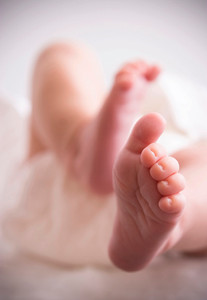 The importance of keeping your child’s feet healthy is crucial in possibly preventing potential foot problems later in life. There are simple tasks that can be accomplished daily that will promote healthy feet and may positively affect the overall health of the body. These may include washing and drying the feet daily, which may aid in avoiding athlete's foot from developing, in additional to choosing comfortable socks and shoes to wear. Research has shown that if shoes, which are worn have become too tight, bunions may develop if there is a pre-existing case present. This is known to be a painful condition in which a hard, bony growth develops on the side of the big toe and will typically make it necessary to wear larger size shoes that can accommodate the bunion. If you would like additional information about how to keep your child's feet healthy, it is recommended that you speak to a podiatrist who can provide the proper answers to your questions.
The importance of keeping your child’s feet healthy is crucial in possibly preventing potential foot problems later in life. There are simple tasks that can be accomplished daily that will promote healthy feet and may positively affect the overall health of the body. These may include washing and drying the feet daily, which may aid in avoiding athlete's foot from developing, in additional to choosing comfortable socks and shoes to wear. Research has shown that if shoes, which are worn have become too tight, bunions may develop if there is a pre-existing case present. This is known to be a painful condition in which a hard, bony growth develops on the side of the big toe and will typically make it necessary to wear larger size shoes that can accommodate the bunion. If you would like additional information about how to keep your child's feet healthy, it is recommended that you speak to a podiatrist who can provide the proper answers to your questions.
Making sure that your children maintain good foot health is very important as they grow. If you have any questions, contact one of our podiatrists of James Kutchback, DPM, CWS-P. Our doctors can provide the care you need to keep you pain-free and on your feet.
Keeping Children's Feet Healthy
Having healthy feet during childhood can help prevent medical problems later in life, namely in the back and legs. As children grow, their feet require different types of care. Here are some things to consider...
Although babies do not walk yet, it is still very important to take care of their feet.
Avoid putting tight shoes or socks on his or her feet.
Allow the baby to stretch and kick his or her feet to feel comfortable.
As a toddler, kids are now on the move and begin to develop differently. At this age, toddlers are getting a feel for walking, so don’t be alarmed if your toddler is unsteady or ‘walks funny’.
As your child gets older, it is important to teach them how to take care of their feet.
Show them proper hygiene to prevent infections such as fungus.
Be watchful for any pain or injury.
Have all injuries checked by a doctor as soon as possible.
Comfortable, protective shoes should always be worn, especially at play.
If you have any questions, please feel free to contact our offices located in The Woodlands and Woodville, TX . We offer the newest diagnostic and treatment technologies for all your foot care needs.
How to Care for Your Child's Feet
It is never normal for a child to experience pain in his or her feet. Foot pain that lasts more than a few days and limits a child’s ability to walk should be examined by a podiatrist. Many adult foot ailments originate in childhood and may be present at birth. Common foot issues that are experienced by children are pediatric flat foot, Sever’s disease, ingrown toenails, and plantar warts.
A child’s foot grows rapidly during the first year, allowing it to reach almost half of their adult foot size. Consequently, foot specialists consider the first year to be the most crucial point in the foot development process. There are ways you can help ensure that your child’s foot develops properly. One way is to carefully look at your baby’s feet. If you notice any deformities, you should immediately seek professional care. You should also loosely cover your child’s foot, since tight coverings may prevent movement and inhibit normal development. Another tip is to change the baby’s positioning throughout the day. If your baby lies down in one spot for too long, it may put an excess amount of strain on the feet and legs.
It is best that you try not to force a child to start walking. Children will begin to walk when they are both physically and emotionally capable to do so. You should also avoid comparing your child’s walking progress with other children because the age range for independent walking may range. When your child’s feet begin to develop, you may need to change both their shoe and sock size every few months to allow room for their feet to grow.
Kids are sometimes prone to splinters, cuts, and severe injuries because they tend to walk around barefoot. This also makes them more susceptible to developing plantar warts which is a condition caused by a virus that invades the sole of the foot through breaks in the skin. These ailments can be avoided by making sure your child wears shoes in unsanitary environments. You should also wash any minor cuts or scrapes on your child’s feet. It is a myth that exposure to fresh air will heal injuries; fresh air will only expose your child’s cuts to germs.
As a parent, you should ensure that your child’s feet are developing properly and are being properly maintained. Consequently, it is important that you perform routine inspections on his or her feet to detect any injuries or deformities in their early stages. Early detection and treatment will help to ensure that your child does not develop any serious foot conditions.
The Feet May Be Affected by Obesity
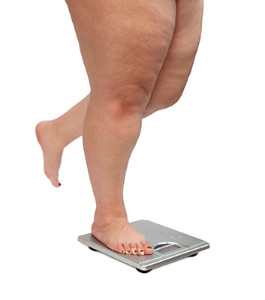 People who are overweight may experience foot pain that may be indicative of specific foot conditions. Any additional weight the feet endure may lead to inflammation of the plantar fascia, which may lead to the painful and uncomfortable condition known as plantar fasciitis. This particular tendon is located at the bottom of the foot and its main function is to connect the heel bone to the toes. If this should become irritated as a result of extra weight the body carries, daily activities such as walking may prove difficult to accomplish. This may cause an altered style of walking, which may result in imbalance. Falling may occur, which may lead to breaking or spraining an ankle. Additionally, medical conditions may develop that may be linked to obesity including gout, osteoarthritis, or diabetes. If you are afflicted with additional weight gain that may be causing foot concerns, please consult with a podiatrist so proper advice for relief may be obtained.
People who are overweight may experience foot pain that may be indicative of specific foot conditions. Any additional weight the feet endure may lead to inflammation of the plantar fascia, which may lead to the painful and uncomfortable condition known as plantar fasciitis. This particular tendon is located at the bottom of the foot and its main function is to connect the heel bone to the toes. If this should become irritated as a result of extra weight the body carries, daily activities such as walking may prove difficult to accomplish. This may cause an altered style of walking, which may result in imbalance. Falling may occur, which may lead to breaking or spraining an ankle. Additionally, medical conditions may develop that may be linked to obesity including gout, osteoarthritis, or diabetes. If you are afflicted with additional weight gain that may be causing foot concerns, please consult with a podiatrist so proper advice for relief may be obtained.
The more you weigh, the harder your feet must work to support your body. If you’re an obese individual and are concerned about your feet, contact one of our podiatrists from James Kutchback, DPM, CWS-P. Our doctors can provide the care you need to keep you pain-free and on your feet.
Obesity and Your Feet
People who are overweight are putting more pressure on their ankles, knees, and hips as well as their feet. This unfortunately can lead to variety of different issues.
Problems & Complications Stemming from Obesity
- When the body is overweight, it tries to compensate by changing the way that it moves. An obese person may lean forward and put extra weight on the wrong part of the foot. This puts unnecessary stress on the feet.
- Obese people are also more likely to develop type II diabetes which is a condition that causes a lot of foot problems. People with diabetes often don’t feel the cuts and sores that they may have on their feet, which can lead to more complicated and severe issues.
- Plantar fasciitis is another foot condition that can be caused by obesity. Plantar fasciitis is an inflammation of the tissue along the bottom of the foot, which causes pain and stiffness while walking and climbing stairs.
If you have any questions please contact our offices located in The Woodlands and Woodville, TX . We offer the newest diagnostic and treatment technologies for all your foot and ankle needs.
Obesity and the Feet
Obesity is a common problem in American society. Approximately one third of the U.S. population is obese. Obesity is defined as a body mass index greater than 30. Obesity has the power to affect different aspects of the body, and one of the most common problems it causes is foot pain. There have been many studies that found a connection between an increased BMI and foot problems. A simple activity such as walking up a flight of stairs can increase pressure on the ankle by four to six times.
Being overweight causes the body to compensate for the extra weight by changing the way it moves. Consequently, people who struggle with obesity commonly have arch problems in their feet. Obesity causes the arch to break by stretching the ligaments and tendons that hold the bones in the foot together. When the arch lowers, the foot may eventually fall flat. Collapsed foot arches fail to provide adequate shock absorption which eventually leads to foot pain. Other conditions that may be caused by flat feet are pronation, plantar fasciitis, weak ankles, and shin splints.
Foot problems that are caused by obesity may be treated by wearing proper footwear. Proper shoes will allow your feet to have better circulation around the arch and ankle. Additionally, those with obesity often discover that typical heel pain remedies are not effective for them. They will find that their plantar fascia is easily injured, and it is often inflamed. The best way to treat this problem is to implement lifestyle changes. A few good ways to improve your diet are to reduce calories, fill up on fruits and veggies, and to limit sugars.
Custom foot orthotics can prevent foot problems if you’re carrying excess weight or are trying to lose weight. The purpose of orthotics is to provide shock absorption to decrease the amount of stress on the joints to prevent arthritis.
Different Types of Foot Surgery
 There are several painful and uncomfortable foot conditions that may improve if foot surgery can be performed. If a severe fracture in the foot is experienced and the bone protrudes from the skin, surgery can be an effective way to position the bone back into its correct position. A surgical procedure referred to as joint fusion may be performed to correct bunions or damage that has occurred, which may be a result of arthritis. Additionally, arthroscopic surgery may be useful in removing tissues that have become inflamed in the early stages of arthritis. If you are afflicted with the condition that is known as hammertoe, surgery may be a necessary step in straightening the toes that are bent. If you have uncomfortable heel pain and other treatment methods have been exhausted, surgery may be successful in eliminating or reducing this type of pain. It is advised to consult with a podiatrist if you have foot conditions and may be considering surgery for relief.
There are several painful and uncomfortable foot conditions that may improve if foot surgery can be performed. If a severe fracture in the foot is experienced and the bone protrudes from the skin, surgery can be an effective way to position the bone back into its correct position. A surgical procedure referred to as joint fusion may be performed to correct bunions or damage that has occurred, which may be a result of arthritis. Additionally, arthroscopic surgery may be useful in removing tissues that have become inflamed in the early stages of arthritis. If you are afflicted with the condition that is known as hammertoe, surgery may be a necessary step in straightening the toes that are bent. If you have uncomfortable heel pain and other treatment methods have been exhausted, surgery may be successful in eliminating or reducing this type of pain. It is advised to consult with a podiatrist if you have foot conditions and may be considering surgery for relief.
Foot surgery is sometimes necessary to treat a foot ailment. To learn more, contact one of our podiatrists of James Kutchback, DPM, CWS-P. Our doctors will assist you with all of your foot and ankle needs.
When Is Surgery Necessary?
Foot and ankle surgery is generally reserved for cases in which less invasive, conservative procedures have failed to alleviate the problem. Some of the cases in which surgery may be necessary include:
- Removing foot deformities like bunions and bone spurs
- Severe arthritis that has caused bone issues
- Cosmetic reconstruction
What Types of Surgery Are There?
The type of surgery you receive will depend on the nature of the problem you have. Some of the possible surgeries include:
- Bunionectomy for painful bunions
- Surgical fusion for realignment of bones
- Neuropathy decompression surgery to treat nerve damage
Benefits of Surgery
Although surgery is usually a last resort, it can provide more complete pain relief compared to non-surgical methods and may allow you to finally resume full activity.
Surgical techniques have also become increasingly sophisticated. Techniques like endoscopic surgery allow for smaller incisions and faster recovery times.
If you have any questions, please feel free to contact our offices located in The Woodlands and Woodville, TX . We offer the newest diagnostic and treatment technologies for all your foot care needs.
Foot Surgery
In most cases, foot surgery is often chosen as the last available option for conditions that have otherwise been unsuccessfully treated. Surgery may be necessary for several reasons, including the removal of foot deformities (e.g. bone spurs or bunions), arthritis problems, reconstruction due to injury, and congenital malformations (e.g. club foot or flat feet). Regardless of one’s age, foot surgery may be the only successful option for treatment for certain conditions.
The type of surgery one undergoes depends on the type of foot condition the patient has. For the removal of a bunion growth, a bunionectomy is necessary. If the bones in the feet need to be realigned or fused together, a surgical fusion of the foot is needed. For pain or nerve issues, a patient may require surgery in which the tissues surrounding the painful nerve are removed. Initially, less invasive treatments are generally attempted; surgery is often the last measure taken if other treatments are unsuccessful.
While in many cases surgery is often deemed as the final resort, choosing surgery comes with certain benefits. The associated pain experienced in relation to the particular condition is often relieved with surgery, allowing patients to quickly resume daily activities. The greatest benefit, however, is that surgery generally eliminates the problem immediately.
Podiatry history has shown that foot treatments continue to evolve over time. In the field of foot surgery, endoscopic surgery is just one of the many advanced forms of surgery. As technology vastly improves so too will the various techniques in foot surgery, which already require smaller and smaller incisions with the use of better and more efficient tools. Thanks to such innovations, surgery is no longer as invasive as it was in the past, allowing for faster and easier recoveries.
What Causes Poor Circulation?
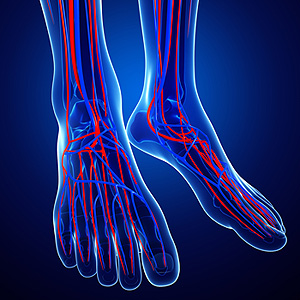 The medical condition referred to as poor circulation is a result of restricted blood movement through the vessels. This generally occurs when the arteries are blocked, and the blood has difficulty flowing through the body. General causes for this condition to develop may include indulging in unhealthy lifestyle habits such as smoking, lack of exercise, or being overweight. Research has shown that medical conditions may play a significant role in developing poor circulation, including high blood pressure, having diabetes, or Raynaud’s syndrome. The latter condition will cause the feet to turn white while exposed to cold temperatures. There are known to be several symptoms associated with poor circulation, which may include cramping in the legs and feet, experiencing a tingling or numbing sensation, or having cold feet. If you have any of the above symptoms, it’s suggested to speak with a podiatrist, so a proper diagnosis can be performed.
The medical condition referred to as poor circulation is a result of restricted blood movement through the vessels. This generally occurs when the arteries are blocked, and the blood has difficulty flowing through the body. General causes for this condition to develop may include indulging in unhealthy lifestyle habits such as smoking, lack of exercise, or being overweight. Research has shown that medical conditions may play a significant role in developing poor circulation, including high blood pressure, having diabetes, or Raynaud’s syndrome. The latter condition will cause the feet to turn white while exposed to cold temperatures. There are known to be several symptoms associated with poor circulation, which may include cramping in the legs and feet, experiencing a tingling or numbing sensation, or having cold feet. If you have any of the above symptoms, it’s suggested to speak with a podiatrist, so a proper diagnosis can be performed.
Poor circulation is a serious condition and needs immediate medical attention. If you have any concerns with poor circulation in your feet contact one of our podiatrists of James Kutchback, DPM, CWS-P. Our doctors will treat your foot and ankle needs.
Poor Circulation in the Feet
Poor blood circulation in the feet and legs is can be caused by peripheral artery disease (PAD), which is the result of a buildup of plaque in the arteries.
Plaque buildup or atherosclerosis results from excess calcium and cholesterol in the bloodstream. This can restrict the amount of blood which can flow through the arteries. Poor blood circulation in the feet and legs are sometimes caused by inflammation in the blood vessels, known as vasculitis.
Causes
Lack of oxygen and oxygen from poor blood circulation restricts muscle growth and development. It can also cause:
- Muscle pain, stiffness, or weakness
- Numbness or cramping in the legs
- Skin discoloration
- Slower nail & hair growth
- Erectile dysfunction
Those who have diabetes or smoke are at greatest risk for poor circulation, as are those who are over 50. If you have poor circulation in the feet and legs it may be caused by PAD and is important to make changes to your lifestyle in order to reduce risk of getting a heart attack or stroke. Exercise and maintaining a healthy lifestyle will dramatically improve conditions.
As always, see a podiatrist as he or she will assist in finding a regimen that suits you. A podiatrist can also prescribe you any needed medication.
If you have any questions, please feel free to contact our offices located in The Woodlands and Woodville, TX . We offer the newest diagnostic and treatment technologies for all your foot care needs.
Causes, Symptoms, and Treatment of Poor Blood Circulation in the Feet
Poor blood circulation in the feet and legs is often caused by peripheral artery disease (PAD), which is usually the result of a buildup of plaque in the arteries. Plaque buildup, or atherosclerosis, can be the result of excess calcium and cholesterol in the bloodstream. This restricts how much blood can flow through arteries. Reduced blood flow to a certain area of the body severely limits the amount of oxygen and nutrients that part of the body receives. This leads to degeneration in the muscles and other tissues. Sometimes, poor blood circulation in the feet and legs can be caused by other conditions, such as the damaging or inflammation of blood vessels, known as vasculitis.
The lack of oxygen and nutrients caused by poor blood circulation can restrict muscle growth and development, as well as cause muscle pain and cramps, weakness, and stiffness. Other common symptoms include numbness in the legs and feet, skin discoloration in the affected limbs, slower nail and hair growth, and erectile dysfunction in men. In more severe cases of PAD, pain can be present even when a person isn't exercising, and may range from mildly uncomfortable to completely debilitating.
Poor blood circulation in the feet and legs is more common in those who are overweight or obese, have diabetes, high blood pressure, high cholesterol, who smoke, or who have a family history of PAD or related conditions such as a heart attack, stroke, etc. Diabetes and smoking place a person at greatest risk for developing poor blood circulation, although advanced age, over 50, can also increase risk.
If you are experiencing poor blood circulation in the feet and legs caused by PAD, it is important to make changes to your lifestyle in order to reduce your risk of experiencing a heart attack or stroke caused by this condition. If you smoke, quit completely. This will increase the amount of oxygen in your bloodstream. Exercising and reducing the saturated fats in your diet. Saturated fats come from fatty meats, fried foods, whole milk, etc., can make a difference in improving blood circulation in feet. It is also important to avoid developing influenza and to carefully control your blood sugar if you have diabetes.
Your doctor may recommend combining lifestyle changes with a prescription medication regimen to improve blood circulation. The most commonly-used medications for PAD are called statins and work by blocking the amount of enzymes in your body that produce cholesterol. They are known by the brand names Zocor, Lipitor, Crestor, and others.
Foot Pain May Affect Proper Balance
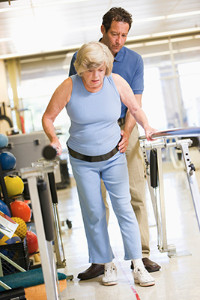 When our feet feel good, maintaining daily activities may be accomplished with ease. This is also true for the elder population, and additional care may be needed to achieve this. Pain in the feet may affect balance and this may possibly lead to injuries, which may be a result of falling. Research has shown that elder’s will benefit by understanding the need to practice proper foot hygiene in addition to seeking medical care if any foot pain is noticeable. It may help to wear footwear that fits correctly, which may diminish the possibility of specific foot conditions from developing. This includes ingrown toenails, hammertoe, or bunions. When the proper weight is maintained, the body will feel will better, in addition to positively affecting the overall health of the feet. Please speak with a podiatrist if you would like additional information about how to take care of elderly feet.
When our feet feel good, maintaining daily activities may be accomplished with ease. This is also true for the elder population, and additional care may be needed to achieve this. Pain in the feet may affect balance and this may possibly lead to injuries, which may be a result of falling. Research has shown that elder’s will benefit by understanding the need to practice proper foot hygiene in addition to seeking medical care if any foot pain is noticeable. It may help to wear footwear that fits correctly, which may diminish the possibility of specific foot conditions from developing. This includes ingrown toenails, hammertoe, or bunions. When the proper weight is maintained, the body will feel will better, in addition to positively affecting the overall health of the feet. Please speak with a podiatrist if you would like additional information about how to take care of elderly feet.
Proper foot care is something many older adults forget to consider. If you have any concerns about your feet and ankles, contact one of our podiatrists from James Kutchback, DPM, CWS-P. Our doctors can provide the care you need to keep you pain-free and on your feet.
The Elderly and Their Feet
As we age we start to notice many changes in our body, but the elder population may not notice them right away. Medical conditions may prevent the elderly to take notice of their foot health right away. Poor vision is a lead contributor to not taking action for the elderly.
Common Conditions
- Neuropathy – can reduce feeling in the feet and can hide many life-threatening medical conditions.
- Reduced flexibility – prevents the ability of proper toenail trimming, and foot cleaning. If left untreated, it may lead to further medical issues.
- Foot sores – amongst the older population can be serious before they are discovered. Some of the problematic conditions they may face are:
- Gouging toenails affecting nearby toe
- Shoes that don’t fit properly
- Pressure sores
- Loss of circulation in legs & feet
- Edema & swelling of feet and ankles
Susceptible Infections
Diabetes and poor circulation can cause general loss of sensitivity over the years, turning a simple cut into a serious issue.
If you have any questions, please feel free to contact our offices located in The Woodlands and Woodville, TX . We offer the newest diagnostic and treatment technologies for all your foot care needs.




